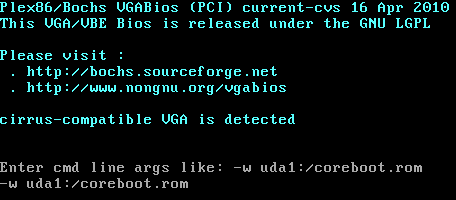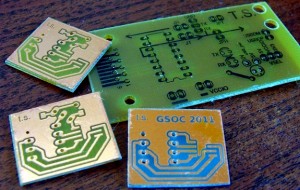
If you're following me on identi.ca you probably already know that I've been designing a small PCB for a USB-based SPI chip programmer named openbiosprog-spi.
The main use-case of the device is to help you recover easily from a failed BIOS upgrade (either due to using an incorrect BIOS image, due to power outages during the flashing progress, or whatever). The device only supports SPI chips, as used in recent mainboards (in DIP-8 form factor, or via manual wiring possibly also soldered-in SO-8 variants). It can identify, read, erase, or write the chips.
Of course the whole "toolchain" of software tools I used for creating the hardware is open-source, and the hardware itself (schematics and PCB layouts) are freely released under a Creative Commons license (i.e., it's an "Open Hardware" device). The user-space source code is part of flashrom (GPL, version 2), the schematics and PCB layouts are licensed under the CC-BY-SA 3.0 license and were created using the open-source Kicad EDA suite (GPL, version 2).


The schematics, PCB layouts, and other material is available from gitorious:
$ git clone git://gitorious.org/openbiosprog/openbiosprog-spi.git
You can also download the final Gerber files (ZIP) for viewing them, or sending them to a PCB manufacturer.
Some more design notes:
- The device uses the FTDI FT2232H chip as basis for USB as well as for handling the actual SPI protocol in hardware (MPSSE engine of the FT2232H).
- Attaching the SPI chip:
- There's a DIP-8 socket on the device so you can easily insert the SPI chip you want to read/erase/program.
- Optionally, if you don't want a DIP-8 socket, you can solder in a pin-header with 8 pins, which allows you to connect the individual pins to the SPI chip via jumper wires or grippers/probes.
- The PCB board dimensions are 44mm x 20mm, and it's a 2-layer board using mostly 0603 SMD components.
Basic usage example of the device on Linux (or other OSes supported by flashrom):
$ flashrom -p ft2232_spi:type=2232H,port=A -r backup.bin (reads the current chip contents into a file)


Over at the main projects page of openbiosprog-spi at
http://randomprojects.org/wiki/Openbiosprog-spi
I have put up a lot more photos and information such as the bill of materials, the Kicad settings I used for creating the PCBs, the Gerber files and the Excellon drill files and so on.
The first few prototype boards I ordered at PCB-POOL.COM (but you can use any other PCB manufacturer of course), the bill of materials (BOM) lists the Mouser and CSD electronics part numbers and prices, but you can also buy the stuff elsewhere, of course (Digikey, Farnell, whatever).
I already hand-soldered one or two prototypes and tested the device. Both hardware and software worked fine basically, you just need a small one-liner patch to fix an issue in flashrom, but that should be merged upstream soonish.
In order to make it easy for interested users to get the PCBs I'll probably make them available in the BatchPCB Market Place soonish, so you can easily order them from there (you do still need to solder the components though). Note: I'm not making any money off of this, this is a pure hobby project.
All in all I have to say that this was a really fun little project, and a useful one too. This was my first hardware project using Kicad (I used gEDA/PCB, also an open-source EDA toolsuite, for another small project) and I must say it worked very nicely. I didn't even have to read any manual really, it was all pretty intuitive. Please consider not using Eagle (or other closed-source PCB software) for your next Open Hardware project, there are at least two viable open-source options (Kicad, gEDA/PCB) which both work just fine.









